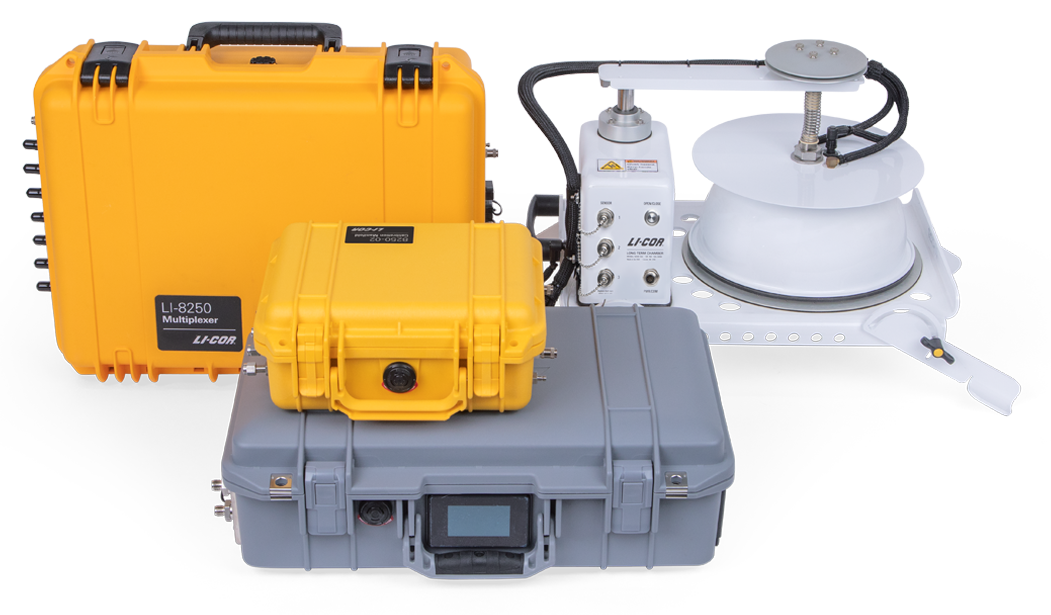Field measurements of CO2 isotopes
With global sustainability goals, local and national carbon emissions regulations, and the urgent need for climate change mitigation, the world needs to know how carbon moves in Earth’s ecosystems. Soil carbon isotope measurements are crucial for fully understanding the carbon cycle, but existing monitoring tools are complex, expensive, and challenging to use.
Simplify your carbon isotope measurements and expand your soil gas flux research with the LI-7825 CO2 Isotope/NH3 Trace Gas Analyzer integrated into our automated soil gas flux monitoring system. With this complete solution, you can trace carbon sources directly in the field and measure soil carbon movement and storage in your ecosystem.
Trace Sourcesof Carbon
Continuous, Field-basedδ13C Measurements
Complete, ExpandableSolution
Why trace carbon sources?
Each source of soil carbon–organic material decomposition, root respiration, microbial activity, or weathering processes–produces a unique isotopic signature. Because of this unique signature, measuring the carbon isotope ratio, or δ13C, released from soil over time allows you to investigate the origin and evolution of soil carbon. When you track the carbon cycle in an ecosystem, you can:
- Validate carbon capture and storage programs
- Conduct carbon emission or absorption studies
- Understand the effects of land-use change and remediation projects
- Evaluate the effects of fertilizer, pesticides, and other treatments on soil health

Automated calibrations for continuous, on-site measurements
Engineered to be field-deployable and rugged, the LI-7825 CO2 Isotope/NH3 Trace Gas Analyzer, together with proven long-term soil gas flux solution from LI-COR, makes δ13C monitoring straightforward and accessible. The weather-resistant system automates on-site calibrations, keeping your data reliably accurate and precise.

Depending on your requirements, the system includes:
In addition, instead of requiring destructive sampling or time-consuming sample transport from the field to the lab, automated chamber-based measurements provide real-time CO2 isotope and flux data while minimizing disruption to natural soil processes.
A complete solution that expands to meet your needs
An automated isotope or soil gas flux monitoring solution from LI-COR can grow with your research needs. Combine multiple Trace Gas Analyzers and up to 36 long-term soil chambers for additional gas monitoring and increased spatial coverage.
Manage your data remotely using SoilFluxPro™, exclusive LI-COR software with powerful data processing tools and a convenient user interface for optimizing your soil gas δ13C and flux results.
8250-02 Specifications
Build an automated δ13C and soil gas flux monitoring system today.
Design Your SystemReturn to Long-term soil gas flux monitoring solutions
Back